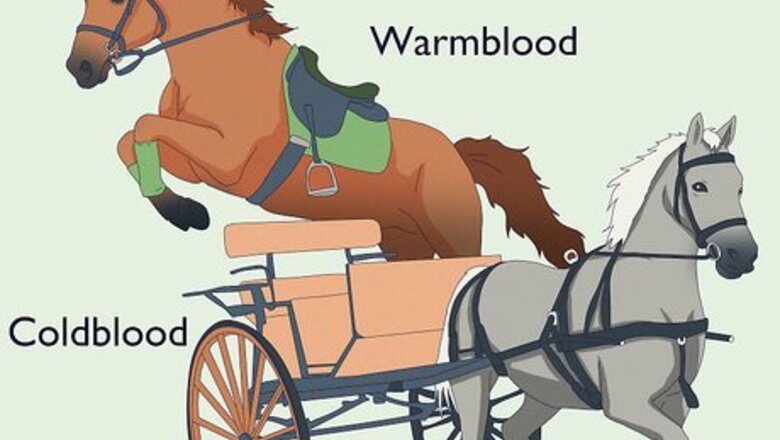
views
- There are three main categories of full-size horse breeds: warmbloods, coldbloods, and hotbloods.
- Warmblood horses are medium-sized and useful for many tasks. They’re fast enough for horseback riding and strong enough to pull small carriages.
- Coldblood horses are big, calm, and super strong. They’re perfect for industrial tasks like farming or pulling heavy carriages.
- Hotblood horses are fast, feisty, and super athletic. They’re primarily used for horseracing.
Warmblood vs. Coldblood Horses
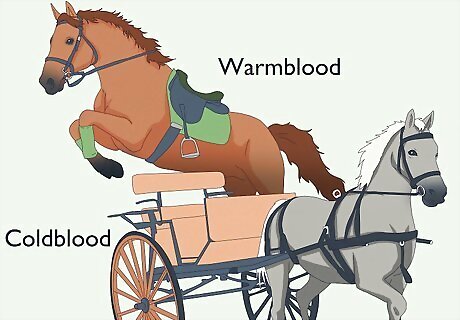
Warmblood horses are faster, while coldbloods are stronger. Warmbloods are smart and agile, which is why they’re often used for leisure riding. Coldbloods, AKA “draft horses,” are powerhouses: big and super strong. Though they’re slower than warmbloods, coldbloods can pull heavy carriages and carry lots of weight. But what about hotblood horses? These are the feistiest, fastest, most athletic horses in the world. They’re primarily used for horseracing, and many hotbloods have won competitive races around the world.
Warmblood Horses

Warmblood horses are sporty, medium-sized, and useful for many tasks. They’re athletic enough for leisure riding and competitive equestrian sports, but also strong enough to pull light wagons and carriages. Warmbloods have calmer temperaments than hotblood horses, but are more feisty and energetic than coldbloods. Warmbloods are common in dressage and horse jumping. If you’ve participated in these sports, you’ve probably ridden a warmblood horse.
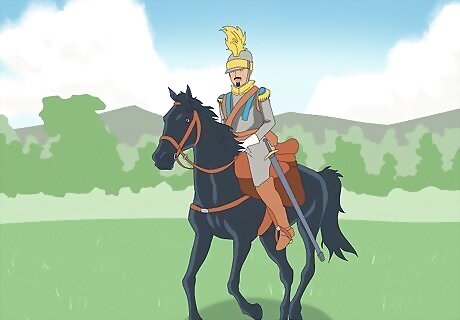
Warmbloods were often bred as cavalry horses for warfare. Their strength and speed made them perfect for hauling equipment and carrying riders into combat. Their intelligence and calmness (compared to hotblood horses) also allowed them to be trained to follow commands, even in the middle of combat. In many cases, new warmblood varieties were created by crossbreeding other varieties. For example, owners might breed a coldblood with a hotblood. Or they might breed several generations of warmbloods with each other to produce offspring with favorable characteristics, such as a calmer temperament or greater endurance.
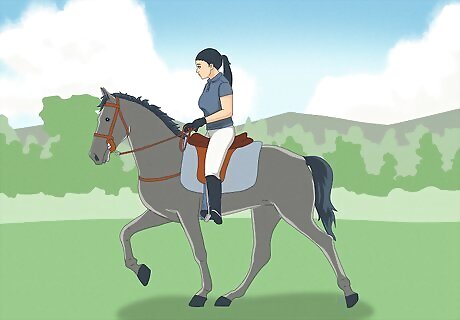
Today, warmbloods are primarily used for sports and leisure riding. In sports like dressage, eventing, and reining, horses compete by following specific commands, performing choreographed movements, and jumping over obstacles. Meanwhile, leisure riders take horses on trails, beaches, or closed tracks for pure enjoyment. There are dozens of warmblood breeds found all over the world, including Hanoverians, Holsteiners, Belgian Warmbloods, American Warmbloods, and Irish Sport Horses. While each warmblood breed has distinct characteristics—like an average size or coat color—they all share warmblood traits like intelligence, strength, and athleticism.
Coldblood Horses
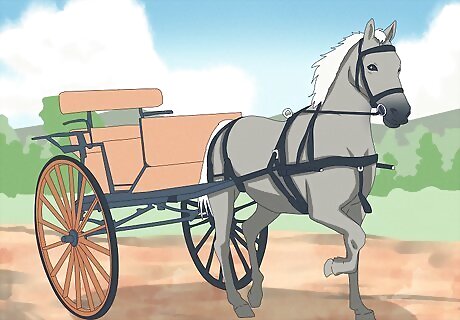
Coldblood horses are big, muscular, and ideal for hard labor. They’re the tallest and heaviest horses, and they can easily carry multiple passengers or pull fully-loaded carriages. Coldbloods are also calm and slow-moving, making them suitable for riders of all abilities—even someone with no experience riding horseback. If you ever sat in a horse-drawn carriage, you were probably being pulled by a coldblood horse.
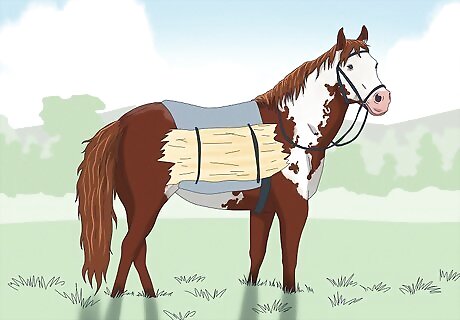
Coldblood horses were originally used as workhorses. Their large size, incredible strength, and patient temperaments made them indispensable before the advent of cars and trucks. Before industrialized farming, a pair of horses could drag heavy plows through fields, allowing farmers to plant crops more efficiently. In cities and factories, multiple coldblood horses could be tied together to pull heavy wagons full of goods and supplies. Coldblood horses were indispensable to human society right up until the 20th century, when automobiles became widespread. They were a common sight in towns, cities, and countrysides all over the world.
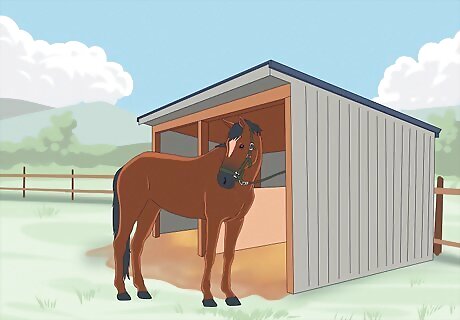
Today, coldbloods still work, but mainly just on small farms. They’ve largely been replaced by heavy machinery, though they're still sometimes used in logging and agriculture. Coldbloods are excellent for low-cost, sustainable farming since they’re more affordable than tractors, have a low carbon footprint, and produce waste that can be turned into compost to fertilize crops. Coldbloods are also used for leisure riding and pulling carriages, which can provide valuable extra income for smaller farms. There are many coldblood breeds in existence today, including Shires, Suffolks, American Cream Drafts, and South German Coldbloods, to name just a few. While each coldblood breed is a bit different, they all share common traits such as large builds, superior strength, and mellow temperaments.
What about hotblood horses?
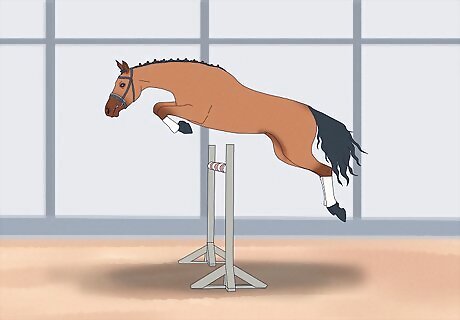
Hotblood horses are fast, intelligent, and perfect for sports. They’re often used in competitions, and many thoroughbred hotbloods have set records in both short- and long-distance races. Since they’re feisty and agile, hotbloods are more challenging to ride than warmbloods or coldbloods. The most most valuable thoroughbred stud horses often sell for hundreds of thousands of dollars. The fastest and most competitive are worth millions.

Hotbloods were originally bred for their speed and fiery temperaments. Their light, athletic bodies and superior genetics made them incredibly agile. Though they were hard to work with due to their “hot-headed” personalities, their intelligence and natural competitiveness made them perfect for competitive racing. Ancient peoples in the Middle East created the first hotblood horses by selectively breeding the fastest, most athletic horses they could find.
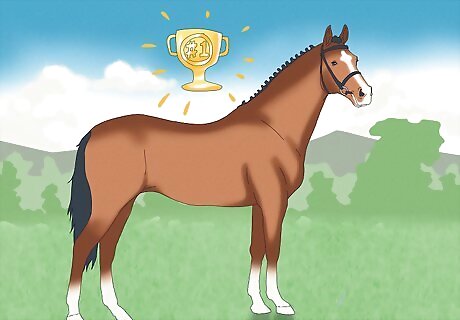
Today, hotbloods are primarily associated with racing. The fastest horses in the world are hotbloods, and some have won major championships like the Kentucky Derby. Elite male hotbloods are sometimes put out to stud—meaning that they’re bred with female hotbloods who also have superior genetics, to produce a new generation of elite racehorses. There are just a handful hotblood breeds in the world, including Thoroughbreds, Arabians, Turkomans, Barbs, and Akhal-Tekes. Thoroughbreds are considered the most elite of all horse breeds. Many winners of the world’s most prestigious horse races have been Thoroughbreds.












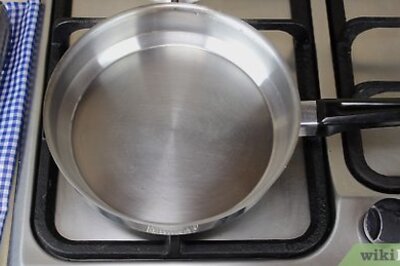






Comments
0 comment